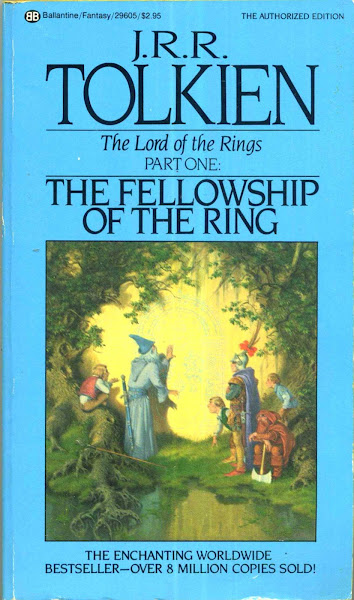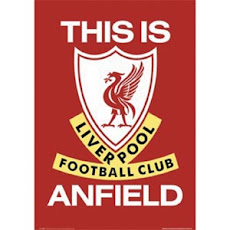This appears on abs-cbnnews.com
Why I am against the banning of foreign student-athletes in the UAAP
Why I am against the banning of foreign student-athletes in the UAAP
by rick olivares
There are reports coming out that foreigners will
soon be banned from playing in the UAAP.
I am scoring this move as another in a seemingly
endless knee-jerk and misguided decisions by the league.
How so?
It is a myopic point of view at the situation that
hardly even tackles the problems of the league.
Let’s first take a look at their arguments:
Allegation: A foreigner takes away a slot of a local player.
My take: Sure he does. But remember, there are 16 slots on a basketball
team. Sixteen.
The UAAP has switched its maximum allowable
players from 14 to 15 to 16 to 15 and then back up to 16 again.
Having said that, let’s examine a few of these UAAP
schools (do not take anything more than need be to those with poor reading
comprehension).
How many players got less than 10 minutes of playing
time in Season 76?
Adamson – Matthew Bernabe and Jerome Garcia
Ateneo – Fran Asuncion and Anton Asistio
FEU – Jeson Delfinado and Jovanie Luz
NU – Cedrick Labing-isa
UST – Jeepy Faundo, Edcor Marata, and Jan Macasaet
There were 125 players on UAAP rosters last season.
Only 10 players saw less than 10 minutes of playing time. La Salle, UP, and UE
made full use of their benches.
La Salle had only 13 players. Only Robert Bolick Jr.
got less than 60 minutes of playing time – 22 minutes.
Over at UP, only Agustin Amar (52) and Andre Paras
(42) got less than 60 minutes total.
UE had five players playing less than 60 minutes
total: Bong Galanza (46), Jai Flores (44), Luis Pujante (15), Mark Olayon (14),
and Leo Guion (10).
The Far Eastern University Tamaraws have two foreign
players in American Anthony Hargrove and Cameroonian Christian Sentcheu. Now
does anyone think that Sentcheu is the second coming of Sam Ekwe? Does he take
time away from another local player?
He isn’t even a dominant player. Sentcheu at best is
a complimentary player. A role player, if you will.
Does that mean that his playing time did not help
Raymar Jose develop? Not at all. Jose has potential. Not every first year
player gets lots of playing time unless you are darn good. Russell Escoto was
on largely on the bench in his first year as Mark and Arvie Bringas got more
playing time. Furthermore, Carl Cruz and Gryann Mendoza were largely on the
bench when FEU still had players like Paul Sanga and company playing long
minutes.
Anthony Hargrove? He has regressed from his first
season. Whether unhappiness with the system and some teammates (and vice
versa), he wasn’t much of a factor unlike the previous year. That meant that
even Carl Cruz had to sometimes play as an undersized power forward and center this year.
If you are going to say that the rookies on FEU
didn’t get enough playing time because of the two then let me point this out to
you.
Christian Sentcheu has been with FEU for four years
now and this is the most he’s gotten playing time this Season 76.
Allegation: The foreigner hinders the development of the local big man.
My take: In all likelihood, this is being targeted against the
African players. And more often than not, they play the center position.
Let’s break down the starting centers for all the
UAAP school this past Season 76
Adamson – Ingrid Sewa
Ateneo – Frank Golla
FEU – Anthony Hargrove
La Salle – Norbert Torres/Arnold Van Opstal
NU – Jean Mbe
UP – Raul Soyud
UE – Chris Javier/Charles Mammie
UST – Karim Abdul
According to Pong Ducanes of Imperium Technologies –
the fine folks who take the UAAP stats – starting centers averaged 26.6 minutes per
game last season. The remainder went to the backup.
Let’s take one player for example.
UE’s Chris Javier. He was the starting slotman for UE
the previous season and he looked like he was going to have a breakout year. I
like Chris Javier. When he was in high school, I thought he was better than the
San Beda Red Cubs starting center Alfonso Gotladera because he was more mobile
and had a semblance of a jumpshot.
Except he’s struggled in college because players are either
as tall or taller than him.
This year, Javier struggled all the more playing either alongside Mammie
or in the starter’s role.
He started seven games but when UE stumbled
out of the gates in the first round going 4-3, he soon went to the bench with
Charles Mammie promoted to the staring five (UE got hurt in the second round
with all their player suspensions). Even when Javier was playing the four-spot
with Mammie at the five, he still struggled. Coach Boycie Zamar confirmed this
with me.
I’d like to compare that to Adamson’s Rodney Brondial
who was in a similar situation. I thought that as much as Ingrid Sewa made
Adamson a better rebounding team, the Falcons were better offensively with
Brondial on the floor and at the four-spot where he made good use of his
jumper. Something that Javier did not do.
In the Red Warriors’ offense, it is Roi Sumang, Ralf
Olivares, and Lord Casajeros who get the touches in that order. Mammie learned
to score without plays being set up for him and Javier did not scavenge for
scraps.
Why did UE show some late season promise in Season
75?
First of all, they responded to the coaching change.
Once they did, they ambushed squads. That’s what happened. When everyone was
prepared to play them, the Red Warriors had a harder time. Furthermore, they lost so many
players to suspensions in S76.
Let’s compare the Red Warriors from S75 and S76:
S75
W-L: 3-11
|
S76
W-L: 7-7
|
Points for: 65.9
|
Points for: 74.4
|
Points allowed: 78.5
|
Points allowed: 75.8
|
Rebounds: 41.6
|
Rebounds: 47.4
|
Rebounds allowed: 49.4
|
Rebounds allowed: 45.8
|
Let’s backtrack to the Adamson Falcons.
What hurt them wasn’t the retardation of their big
men BUT THE LACK OF CONSISTENT PRODUCTION
FROM THEIR BACKCOURT.
Since Sam Ekwe led the San Beda Red Lions in 2004 to
three titles, other schools have felt that that was the way they could compete
with teams with more moneyed programs. And even so, that was still erroneous.
Anyways, here are how the UAAP schools looked like in the wake of the foreign
player frenzy.
Adamson – Austin Manyara, Will Stinnett, and Ingrid Sewa
Ateneo – Kirk Long and Vince Burke
La Salle – Marko Batricevic and Ferdinand
FEU – Pippo Noundou, Christian Sentcheu, and Anthony
Hargrove
NU – Jean Mbe and Henry Betayene
UE – Charles Mammie
UP – Moriah Gingerich and Alinko Mbah
UST – Karim Abdul
Kirk Long, Vince Burke, and Moriah Gingerich are only
there because they are Americans but they grew up here and went to Faith Academy in Antipolo.
Although recruited, Batricevic and Ferdinand played first for LSGH.
Check out this stat: since Pippo Noundou began playing for FEU in Season 72,
the last five UAAP champions featured ZERO Africans. Noundou’s teams went to
the UAAP Finals two in a row as did Abdul’s UST Tigers. But at the end of the
day, the teams with NO AFRICANS won.
Incidentally, this isn’t the first wave of foreign
players to make an impact in the UAAP.
In the early 1980’s, Michael Williams, a medical
student at FEU, played for the Tamaraws and led them to three titles.
The UST football champions of the mid-1980s featured
teams with select African players.
So why didn’t it catch up then?
Simple -- the lack of commercialization.
How do you address that?
I will answer than in the end of this op-ed, in my
recommendations to the UAAP. In the meantime, let’s breakdown “opportunity”
further.
Fact: As of October 17, 2013, if you look at the PBA’s
official website, there are 158 players listed on team rosters (there are
probably at least a dozen not listed and that includes second conference imports
and local free agents).
60 players
are from the UAAP
25 players are from the NCAA
The rest are from smaller leagues like NAASCU, CESAFI
and from foreign schools. The others are imports.
What lack of opportunity are you talking about? The
UAAP gets more of its alums in the pro loop than any demographic.
Once more, here’s the breakdown of the starting
centers for UAAP teams this past Season 76.
Adamson – Ingrid Sewa
Ateneo – Frank Golla
FEU – Anthony Hargrove
La Salle – Norbert Torres/Arnold Van Opstal
NU – Jean Mbe
UP – Raul Soyud
UE – Chris Javier/Charles Mammie
UST – Karim Abdul
Five are foreigners.
Four are home grown players.
One is a Fil-Canadian.
Why am I separating the Fil-foreigners? We will get
to that later.
Here are the starting centers for the schools in
Season 75
Adamson – Rodney Brondial
Ateneo – Greg Slaughter
FEU – Anthony Hargrove
La Salle – Norbert Torres
NU – Jean Mbe
UP – Raul Soyud/Alinko Mbah
UE – Chris Javier
UST – Karim Abdul
Foreigners – Four
Homegrown – Three
Fil-foreigners - Two
Do they take away opportunities?
Let’s take a look at the last four PBA Drafts.
2009 PBA
Draft
Forward/Centers taken in 1st Round
Japeth Aguilar #1
Rico Maierhofer #3
Jervy Cruz #5
James Sena #10
Forward/Centers taken in 2nd Round
Mark Benitez #1
Edwin Asoro #3
PJ Walsham #10
Of this batch, Aguilar, Maierhofer, Cruz and Sena are
with a PBA club.
There were five Fil-foreigners in the 2009 PBA Draft.
2010 PBA
Draft
Forward/centers taken in the 1st round
Rabeh Al-Hussaini #2
Pari Llagas #9
Only Al-Hussaini is still in the PBA.
There were three Fil-foreigners selected.
2011 PBA
Draft
Only one center taken: Magi Sison 11th
pick/2nd round and he is still in the PBA.
Three Fil-foreigners were selected.
2012 PBA
Draft
Two forward/centers were taken in the first round:
Junemar Fajardo #1
Aldrech Ramos #5
Three forward/centers were taken in the second round:
Yousef Taha #1
Dave Marcelo #2
Jewel Ponferrada #3
Four forward/centers were taken in the third round:
Mark Sarangay #5
Macky Acosta #6
Gian Chiu #9
Jason Escueta #10
A total of 11 Fil-foreigners were taken in this draft
including three who went to college here.
My conclusion: I think that the home grown players
face more challenges from Fil-fors. I am glad that the PBA has made it
mandatory that the Fil-foreigners play in the D-League before moving up to the senior
pro circuit. I am not discriminating against the Fil-foreigners. To be very
clear, our constitution guarantees them Filipino citizenship. But conversely,
they too are either half-American, half-Canadian, half-Swiss etc. They too are
counted among citizens of other countries.
My solution: As I said earlier, rather than adopt a myopic point of
view, the UAAP must
look at the
big picture and also from an academic point of view as opposed to knee-jerk and
uninformed decision-making.
The world is a different place now. It used to be
that Filipinos look to study abroad for better education and opportunities.
Times have changed. Foreigners have been going here to study. That is proof of
our very good educational system. Any decision to be made about “banning
foreign student-athletes” must be made from an academic point of view. Our UAAP schools certainly try to accept or recruit the best possible students whether for academic or athletic reasons. How do you separate one from the other?
Should Americans say, “We should not offer
Filipinos a chance to play for US colleges”?
Look who went to America.
Japeth Aguilar went to Western Kentucky.
Gian Chiu went to Oberlin College.
Ael Banal is playing in an American school as well.
We all know that NU’s Jaja Santiago was offered a
scholarship to play volleyball for a US Division I school.
Now let’s go way back.
Many of our tennis stars – Jim and Jennifer Saret,
Felix Barrientos, Joseph Lizardo to name a few -- were offered scholarships to
play for American schools. Didn't they take away slots from Americans?
Jim Saret played for UP then went to Brigham Young. Felix Barrientos went to Louisiana State University where he was an All-American. Joseph Lizardo went to Temple University.
Jim Saret played for UP then went to Brigham Young. Felix Barrientos went to Louisiana State University where he was an All-American. Joseph Lizardo went to Temple University.
There are even Filipino swimmers offered scholarships
to American schools. This is a partial list but I can compile it given more
time.
Yes, they are offered scholarships to compete for
their American colleges. And yes, they do have to graduate as well.
Please do not tell me that there are more
opportunities in the US. It is infinitely more competitive in the US. And yes,
the presence of foreign athletes takes away slots from Americans.
Having said that, the basic problem of the UAAP and
their rules is that they come with lots of grey areas when it comes to RECRUITMENT and the
LACK OF RULES REGULATING THEM. It is the wild wild west when it comes to
recruitment.
The UAAP
must come up with fair, modern, and unbiased rules when it comes to
recruitment.
The league has always reacted to issues. I wonder why they are never
pro-active and merely reactive. And as is the case with the Two-Year and
One-Year Residency Rules, a basketball problem could once more affect the other UAAP
sports.
I believe that the foreign players raise the level of
competition and improve the skills of local players. In other sports, height is
not much of an issue. In basketball, sure height is might but it doesn't guarantee a championship. Having said that, they might want to impose a height limit to allow
locals to compete.
I asked a few UAAP coaches about their take on this
and Nash Racela of FEU and former Adamson head coach Leo Austria believe that
placing a height limit and rules on recruiting will give everyone a fair shake.
Since we like to say that we are good copycats, why
don’t we adopt how the US NCAA goes about in implementing their
recruiting policies. That of course, has to be studied at great length so the
UAAP can place effective measures that work well in a Philippine context.
This is a long piece and I do hope the UAAP takes the
time to read this and study the matter before making an enlightened decision. It really is about
time they come up with something sensible.
-----------------------------------------
If you look at Philippine society today, there are massive changes because the world or global community is getting smaller. The modern metropolis is a melting pot of cultures. When I was working in the US, I felt it was cool that I had Puerto Ricans, Russians, and Greeks for officemates. Ditto in Hong Kong working with Germans, Dutch, English, and Chinese.
A cursory look at even local showbiz will show that Brazilians, Koreans, and even a few Russians are in the industry. Why not? It makes it vibrant. Every year, Filipinos go abroad on scholarships or exchange programs for a college education. Some of them even represent those schools in competition.
For a country trying to get out of its Third World status we sure have backward ideas and notions. But that's because of the win-at-all-costs and commercialization of college sports. There will never be parity in this world. As soon as you understand that the farther you will go in this world. The UAAP must really take a long look at itself in the mirror and ask, What exactly are we trying to accomplish? Kulang talaga sa wisdom mga iba diyan.
----------------------------------------
Kindly check good friend Charlie Cuna's column against this from three years ago.
-----------------------------------------
If you look at Philippine society today, there are massive changes because the world or global community is getting smaller. The modern metropolis is a melting pot of cultures. When I was working in the US, I felt it was cool that I had Puerto Ricans, Russians, and Greeks for officemates. Ditto in Hong Kong working with Germans, Dutch, English, and Chinese.
A cursory look at even local showbiz will show that Brazilians, Koreans, and even a few Russians are in the industry. Why not? It makes it vibrant. Every year, Filipinos go abroad on scholarships or exchange programs for a college education. Some of them even represent those schools in competition.
For a country trying to get out of its Third World status we sure have backward ideas and notions. But that's because of the win-at-all-costs and commercialization of college sports. There will never be parity in this world. As soon as you understand that the farther you will go in this world. The UAAP must really take a long look at itself in the mirror and ask, What exactly are we trying to accomplish? Kulang talaga sa wisdom mga iba diyan.
----------------------------------------
Kindly check good friend Charlie Cuna's column against this from three years ago.









Great article Sir Rick. The UAAP is just targeting the African centers because of their height and built. It would better if they just impose a limit, say only 1 foreign player per school. They worry about our country not producing competent centers, ignoring that GILAS had Marcus Douthit naturalized. Our players would not improve their game if they don't go against bigger and heftier players during their collegiate years.
ReplyDeleteAnd what should the height limit be Rick? I propose 6 ft. 6 for Foreigners....
ReplyDeleteHa ha filipinos has the most anti-foreigner policies in the world. Ironic, our citizens are all around the world. Good in taking, bad in giving
ReplyDeleteCan every school afford a foreign player?
ReplyDeleteWill the school with the most financial backing have an advantage the best foreign player?
Do we set limits to playing time for foreign players to ensure that our local centers develop as well?
Why not naturalized foreign players?
IMO, Fil-'änywhere' isn't or shouldn't be the issue here. If the proposed eligibility rule is aimed at targeting even those, then it'd be a regressive rule indeed.
ReplyDeleteWhat I'm all for is the eradication of the systemic and deliberate (now) practice of recruiting from curiously just one continent of 'no-fil-blood' athletes or imports as a quick-fix for jumpstarting a school's competitiveness or (back to) relevance. Although highly speculative, If Daniel or Ekwe or now Adeogun weren't systematically recruited, would SBC had gotten out of its decade slump? If Abdul wasn't recruited, would UST had gotten back to the finals (though botched at both times) sooner? Had UE stuck to its 'all-filipino' thrust, would it even land 6th this year or maybe replicate its 7th last time? And if Mbala won't play for Dlsu in 1 more year, you honestly think that Dlsu's programmed 6-peat (it just gotta be better than Ateneo no matter) is still highly probable and doable? And if Ateneo didn't succumb to the foreign-player (read: import) bandwagon (the jury is still out on whether they have some to parade or, like FEU's, non-factors) you think Dlsu and EC's mission of Anim-O is still preventable?
Williams case wasn't deliberate. So was Watson's, Long's, et al. They were isolated 'incidentals' coming at a right time. Daniel's wasn't. And when it worked, it became systemic which UAAP tried to emulate but to no avail thus far. But if this practice isn't checked in time, it won't be long before the UAAP produces its very first MVP who can't even serve national duties or play pro basketball in our land.
Who said the "Fil-for" thing is the issue? I merely pointed out to that if people argue that the locals are losing slots and opportunities it isn't solely because of foreigners but also fil-fors. If you don't know that is how many locals in basketball, football, and swimming feel.
DeleteThe point is there should be clear cut unbiased, modern, and fair rules. Of which there aren't.
FYI Karim Abdul wasn't recruited. He enrolled in UST Engineering and was luckily discovered while playing basketball during intramurals.
DeleteYou actuall bought the party line? He was recruited and put in a high school in Antipolo before being moved to UST. Wake up.
DeleteReally? I honestly thought otherwise. Thanks for the info. =) Do you know any african american player who wasn't recruited and genuinely enrolled in a school? Thanks and more power Rick!
DeleteGreat article and very comprehensive! You are right about looking at the bigger picture, and from a much larger perspective, the UAAP has to first make sure what it's identity is -- is it a commercial league where winning at all costs (where the topic falls, recruiting with impunity locally or abroad) prevails, or is it a league for student-athletes first and foremost, so much so that foreigners come to the school equally to study and to play, not 95% to play and to study incidentally simply for eligibility. Only when that is pegged can they have a backbone to create more well defined rules attuned to that identity.
ReplyDeletemagkano kaya ang ibinabayad ng NU sa kanilang mga import? - TrueBlue
ReplyDeleteSM Advantage cards
DeleteWhat I see in this article is the lack of consideration of the possibility that foreigners would inevitably be present in each college team. Let me picture it out for you - the whole landscape of the Philippine college basketball is changing due to the foreigners. How can a local big man challenge or benefit from this if the trajectory of the college scene is to have a dominant foreigner as a starting center? There would no be such "improving" for our locals! College basketball may all boil down to a competition of "who has the better import" Call it pessimistic thinking or whatever, but in the long run, foreign players for mercenary purposes are just bad news. I agree that better recruitment regulations are needed to address this issue, but encouraging the idea of foreign players because they make our local big men better? C'mon man. If it was possible, the UAAP would have had 3 imports in its mythical 5 - Mbe, Abdul, Mammie. On the other hand, NCAA started this whole mess.
ReplyDeletesorry pero if you want the tourney to be more competetive using tall Africans
ReplyDeleteaminin na kasi nating lahat na hindi para satin ang basketball.
Africns will rule the Tourney because they have height..
sad to say we cant teach are players the Height.haha
This comment has been removed by the author.
DeleteHow about the Africans playing in Ateneo Team B? Did they enroll by themselves, pay the tuition? Or were they also recruited?
ReplyDeleteThey were recruited. So what is your point?
Delete